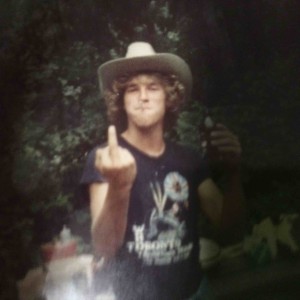My latest for Texas A&M’s Center for Food Safety:
 On September 11, 1998, the journal Science published a paper by Cornell and U.S. Department of Agriculture science-thingies that concluded the key to reducing E. coli O157 in cattle was to feed them hay instead of grain beginning five days before slaughter.
On September 11, 1998, the journal Science published a paper by Cornell and U.S. Department of Agriculture science-thingies that concluded the key to reducing E. coli O157 in cattle was to feed them hay instead of grain beginning five days before slaughter.
The PR writers and journalists had a hay day, saying “a simple change in cattle diets in the days before slaughter may reduce the risk of E. coli infections in humans” or this N.Y.Times headline, “E. coli bacteria can be eliminated from cattle, researchers find.”
Food safety isn’t that simple.
Science isn’t that simple.
Michael Osterholm, director of the Center for Infectious Disease Research and Policy and professor in the School of Public Health at the University of Minnesota wrote in 2007 that the frequently cited Cornell study, was “based on a study of three cows rotated on different diets and for which the researchers did not even test for E. coli O157:H7. Unfortunately, the authors extrapolated these incredibly sparse results to the entire cattle industry.”
In 1998, I helped Dale Hancock of Washington State University anchor an evidence-based response that was also published in Science, but the damage was done.
In the subsequent 17 years, the data on cattle feeding and E. coli risk has been a mess, and open to citation to prove one’s pre-existing viewpoint – that’s why the Internet exists.
As my former Canadian and Kansas colleague David Renter wrote in Sept. 2006,
 “Cattle raised on diets of ‘grass, hay and other fibrous forage’ do contain E. coli O157:H7 bacteria in their feces as do other animals including deer, sheep, goats, bison, opossum, raccoons, birds, and many others.
“Cattle raised on diets of ‘grass, hay and other fibrous forage’ do contain E. coli O157:H7 bacteria in their feces as do other animals including deer, sheep, goats, bison, opossum, raccoons, birds, and many others.
“Cattle diet can affect levels of E. coli O157:H7, but this is a complex issue that has been and continues to be studied by many scientists. To suggest switching cattle from grain to forage based on a small piece of the scientific evidence is inappropriate and irresponsible.”
Simplistically attacking one facet of livestock production may be politically expedient, but instead provides a false sense of security and ignores the biological realities of E. coli O157:H7. In 1999, for example, 90 children were felled at a fair in London, Ont. The source was a goat at a petting zoo.
Although there have been numerous outbreaks of shiga-toxin producing E. coli involving other ruminants – sheep, deer, goats, elk — the critics and the fashionably fashionable keep going back to cattle, especially feedlot cattle.
The San Francisco Chronicle recently joined the food pornographers at the N.Y. Times, and endless organic propaganda by saying – 17 years after the original, unrepeated study — that grass-fed beef is safer.
There is no evidence to prove this.
There’s some social media amplification going here, just like with the anti-vaxxers and raw milk fans.
I’m not sure how to address all the allegedly scientific nonsense that is out there.
I used to be a proponent of take it head on, but over time, it got tiring. Data has never convinced anyone who didn’t want to be convinced.
Dr. Douglas Powell is a former professor of food safety at the University of Guelph in Canada and Kansas State University in the U.S., who shops, cooks and ferments from his home in Brisbane, Australia.
